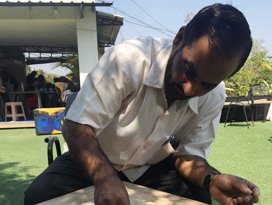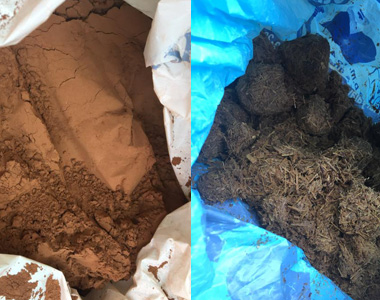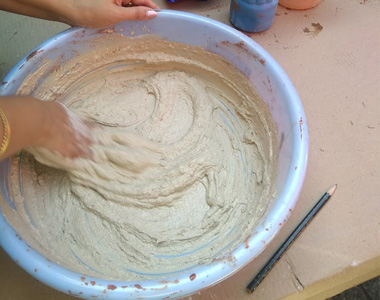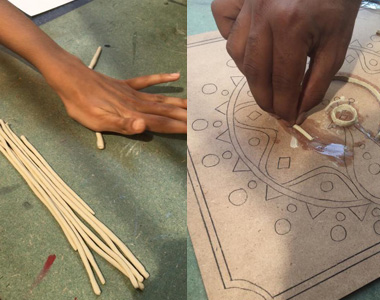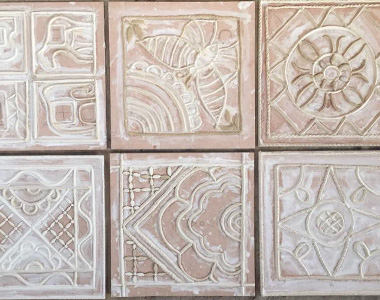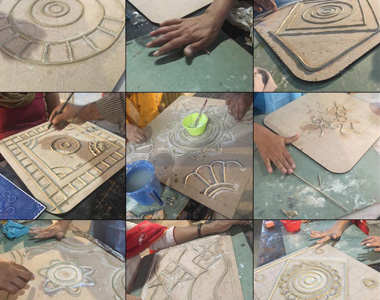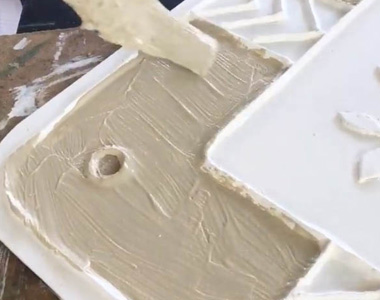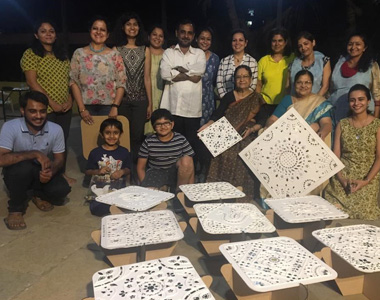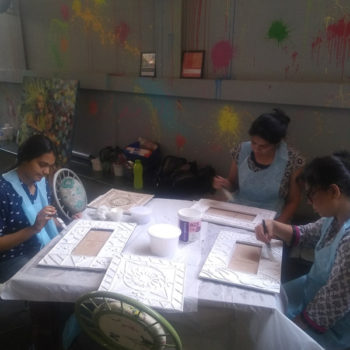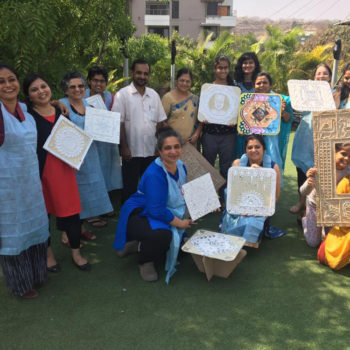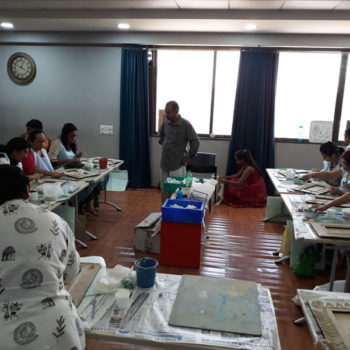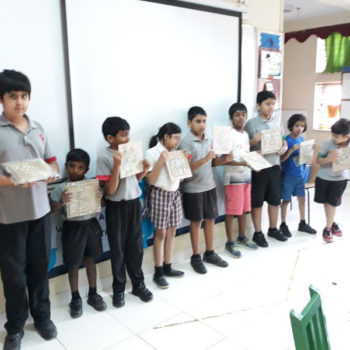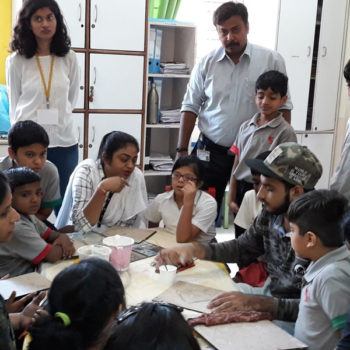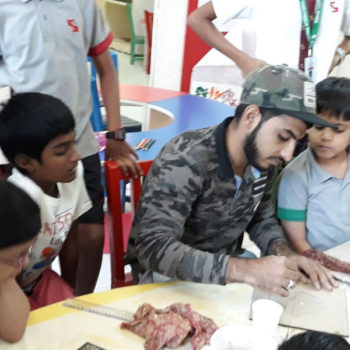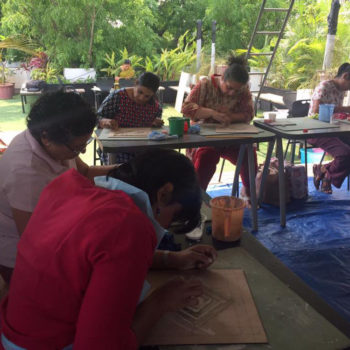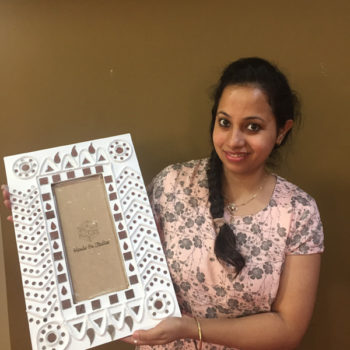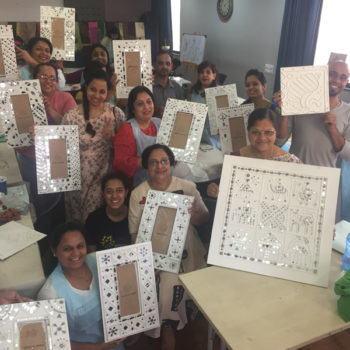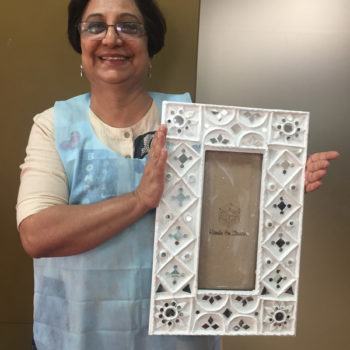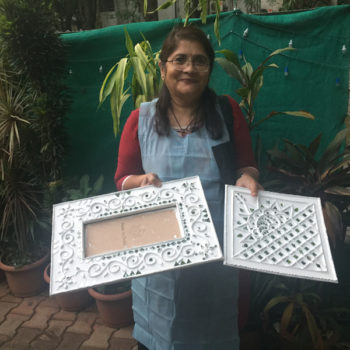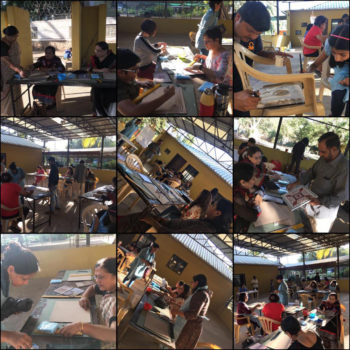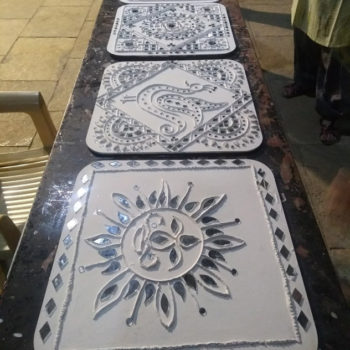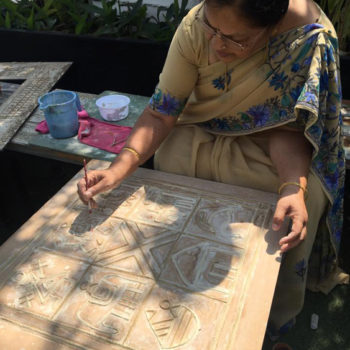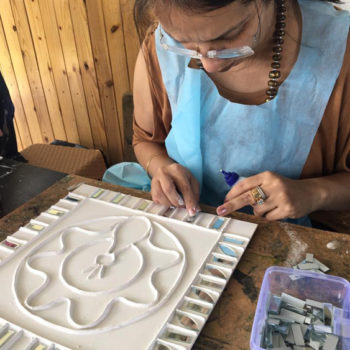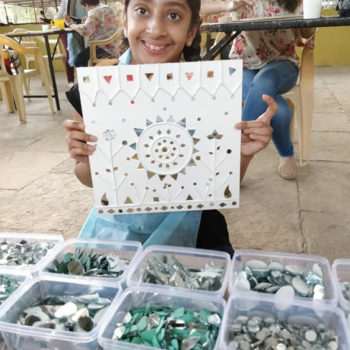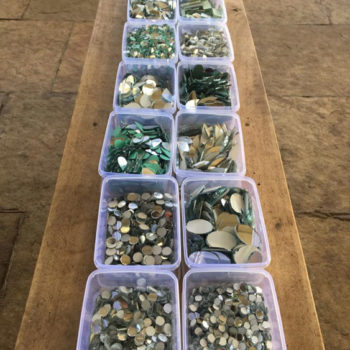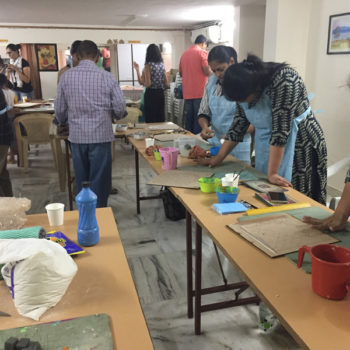In the month of February we conducted a workshop ‘Hands- On with Lippan’ with Gani Mara an award winning traditional Lippan artisan from Bhuj in Pune over a 3 Day workshop across 4 locations in Pune – Art2day, Adipa, Monalisa Kalagram and Doodle Tales Studios.
Lippan kaam is executed on the walls of houses known as ‘bhungas’ using animal dung, clay, chalk powder and mirrors by many communities in the Kutch region. The mirrors are believed to ward off evil and are therefore found as an integral part of their walls. It is also said that the Mughals migrated several of these artisans from the Sindh province to the Kutch region. Eye-catching geometric patterns are hence a prominent feature of this art form as influenced by the Islamic art. Over the years the artisans have adopted several other motifs which include trees, animals, birds, humans and florals.

